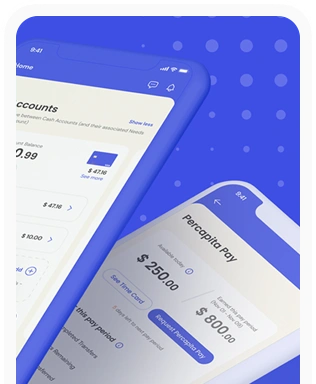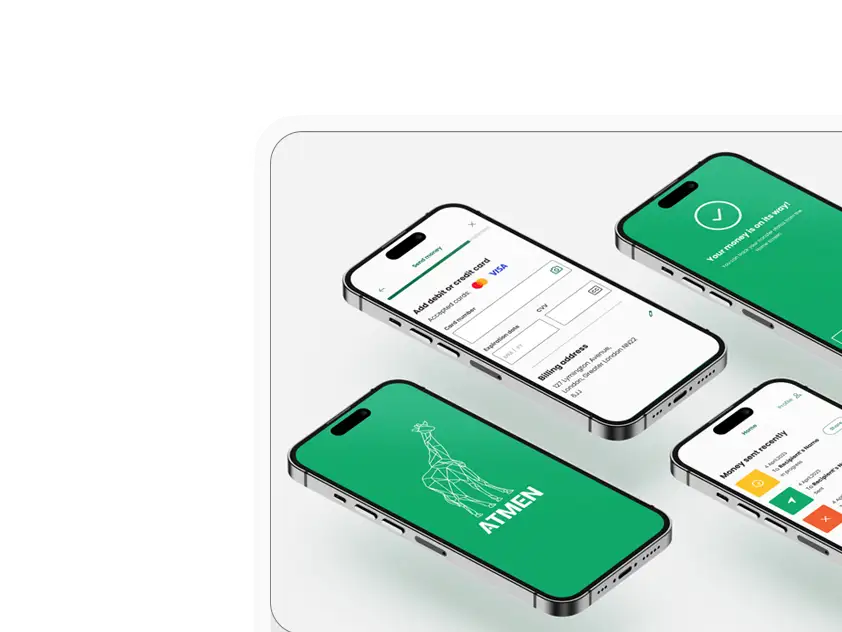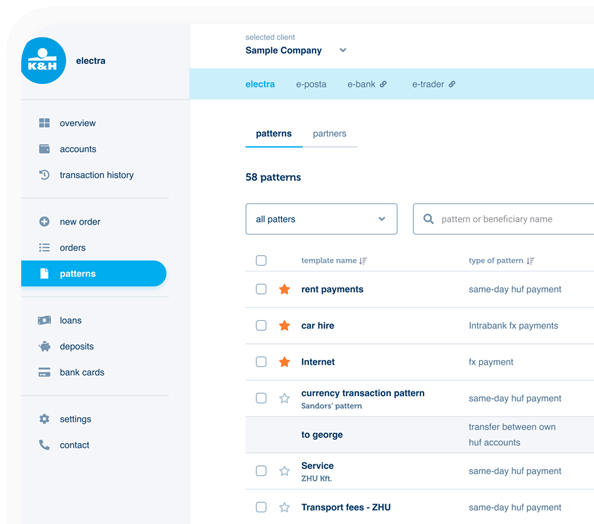Top Strategies to Improve Product Adoption in 2025 – Beyond Churn, ROI, and Customer Journeys
In the digital product market, focusing solely on user acquisition can lull you into a false sense of security. The initial buzz isn't worth much on its own; downloads and registrations can easily hide a desert of abandoned accounts and forgotten applications. The real challenge, and the key to survival, lies in transforming this initial interest into deep, active engagement.
We wrote previously about the main causes of user churn, as well as user experience (UX) strategies to prevent customer leakage. Reducing churn, however, is not enough for success. Now we continue to build the puzzle. Beyond mapping the customer journey, recognising, and trying to prevent user churn, we look at how we can strengthen deep, genuine product adoption.
In the competition between digital products, the key to survival is genuine product adoption where users don't abandon our product, but integrate it into their daily lives and/or work. As the market becomes increasingly saturated, transforming initial interest into long-term engagement is both the biggest challenge and the greatest opportunity. This kind of engagement is not a matter of chance, but the result of a consciously designed UX.
What is genuine product adoption?
Adoption means much more than superficial metrics like the number of downloads or registrations. The continuously experienced value and the developing usage routine are what distinguish successful products from applications that sink into oblivion. Here, the focus is not exclusively on the product's features, but on the user themselves and their personal success. This ‘stickiness’ is the extent to which a product can capture the user. It is reflected in the ratio of daily to monthly active users, the DAU/MAU value, and deep adoption is one of its main indicators.
Success rests on three factors: a deep understanding of user needs and behaviour; agile product development driven by artificial intelligence (AI) and comprehensive data analysis; and the provision of a seamless, value-centric UX, right from the first interaction.
Therefore, artificial intelligence (AI) is expected to become a central organizing force in adoption strategies; product-led growth (PLG) will become the dominant model; and TTV, the time until the first experience of value, will be more critical than ever.
 The continuously experienced value and the developing usage routine are what make a successful product (created with MidJourney)
The continuously experienced value and the developing usage routine are what make a successful product (created with MidJourney)Business consequences of adoption
Product adoption is the complex process by which users become aware of a product, understand its value, start using it, and finally integrate it into their daily lives or professional workflows. While reducing churn focuses on minimizing losses, a high product adoption rate focuses on sustainable growth.
The business consequences are profound: strong adoption is a primary indicator of a product's health, directly influencing revenue growth, customer retention and loyalty, and customer lifetime value (CLV), while reducing churn and favorably affecting net revenue retention (NRR). It also promotes product development (e.g., more engaged users provide more valuable feedback), as well as market visibility or even leadership.
Thus, adoption not only reflects how well the product fits the market, but is also an indicator of the company's innovation speed and market responsiveness, which is why investors may pay close attention to this data. Moreover, the network effect associated with product adoption is becoming increasingly important: successful products naturally attract new users.
The adoption lifecycle
Understanding the adoption lifecycle and curve is essential for strategy development. The stages of the lifecycle ‒ awareness, interest, evaluation, trial, activation, and finally adoption/rejection ‒ help to understand the user's journey. This is complemented by the adoption curve (this influential theory was introduced by sociologist Everett M. Rogers in his 1962 book Diffusion of Innovations), which shows the reaction time of different user segments to new products, from innovators (2.5%) through early adopters (13.5%) and early majority (34%), to late majority (34%) and laggards (16%).
As products mature and strive for broader market penetration, effectively addressing the needs of the early and late majority becomes crucial. This requires a shift from one-size-fits-all solutions to hyper-segmented approaches, where AI can help to dynamically personalize experiences.
At a more detailed level, the feature adoption funnel describes the process by which users adopt individual features within a product: exposure (awareness of the feature's existence), activation (understanding the feature's value ‒ the aha! moment), usage (first trial), and regular usage (genuine adoption of the feature). Understanding this is vital; the total value of the product is composed of its individual features. If users do not discover, understand, or regularly use key features, they will not experience the full potential of the product, which hinders overall adoption.
Key adoption metrics and qualitative indicators
Thorough measurement is essential for the effective management and improvement of product adoption. The combination of quantitative metrics and qualitative indicators provides a comprehensive picture of how users interact with the product and what value they gain from it.
Essential quantitative metrics
- Product adoption rate: The proportion of new users who meaningfully engage with the product. (e.g., (active new users/total new users) × 100).
- User activation rate: The percentage of new users who reach the key milestone representing the aha! moment. Industry benchmark: 40%‒60%.
- Time to value (TTV): The time it takes for a new user to experience the core value of the product. Goal: max. 5 minutes to the first key action.
- Feature adoption rate: The percentage of active users who use a specific feature. Goal for key features: 60%‒80%.
- Customer retention rate: The percentage of users who remain active after a certain period.
- Churn rate: The percentage of users who stop using the product.
- Customer lifetime value (CLV): The total revenue expected from a single customer.
- Product usage frequency/stickiness (DAU/MAU): The ratio of daily to monthly active users. Goal: >20% (B2B SaaS), >30%‒40% (B2C).
Main qualitative indicators
- Customer satisfaction score (CSAT): Measurement of satisfaction after specific interactions.
- Net promoter score (NPS): Measurement of user loyalty and willingness to recommend.
- Customer effort score (CES): Measurement of how easily users can complete a task.
Good metric values are context-dependent. Instead of blindly following general benchmarks, organizations should set internal, context-sensitive goals, using external benchmarks more as a guide. It is also worth breaking down this data by personas or acquisition channels and supplementing it with qualitative indicators (NPS, CSAT, interviews) to shed light on the whys.
Main strategies to boost product adoption in 2025
The strategies leading to successful product adoption and effective product development methods are closely intertwined, with a focus on continuous improvement of the customer experience and techniques to increase user engagement.
1 User understanding and experience design
A successful adoption strategy primarily depends on whether companies strive to understand their users in a profound, detailed, and continuous manner. It is not enough to know superficial demographic data; it is necessary to research the users' hidden behavioral patterns, internal motivations, most pressing problems, and the specific jobs to be done (JTBDs) for which they use the product.
This requires comprehensive user research (using both qualitative and quantitative methods), from which detailed, living user personas and critical user journeys (CUJs) can be drawn. Product journey mapping and a comprehensive customer journey strategy are fundamental. As we detailed in our previous article on customer journey mapping, understanding every step and emotional state of the user journey is critical. AI can help here with real-time feedback analysis and can provide assistance with market intelligence and deeper analysis capabilities.
 It is necessary to research the users' hidden behavioral patterns and internal motivations (created with MidJourney)
It is necessary to research the users' hidden behavioral patterns and internal motivations (created with MidJourney)2 Seamless, value-driven, and intelligent onboarding
First impressions are crucial. The onboarding process should quickly and almost imperceptibly lead the user to the first aha! moment. The goal is to minimize TTV with AI-driven, personalized onboarding processes, interactive walkthroughs, and contextual guidance. The user should experience the product's value with the least possible effort and as quickly as possible (the target for time to first value ‒ TTFV ‒ can be as little as 5 minutes).
Interactive, context-sensitive tips, personalized setting options, and the principle of learning by doing can help with this. Onboarding is continuous support, not just a one-time event. Companies like Trello or Asana can show what they offer in minutes. Effective customer education (embedded knowledge bases, video tutorials ‒ see the Clockshark example and webinars like the HubSpot Academy) is also of great worth.
3 Continuous user engagement and retention
At the heart of techniques to strengthen user engagement are gamification (points, badges, leaderboards, like Asana's celebrating unicorn), strategic and personalized in-app messages (introducing new features, requesting feedback), and building strong user communities (forums, user groups). Educated users are more engaged; Miro's extensive knowledge base or the user academies suggested by Northpass are good examples.
4 The hyper-personalization revolution
AI is a key factor in adoption, and this goes far beyond mere personalization. It enables the segment-of-one approach, based on behavioral data and advanced segmentation. This extends to personalized product recommendations (like Spotify's Discover Weekly), adaptive interfaces (adaptive UI), and predictive assistance. Generative AI (e.g., Jasper, Copy.ai, Idomoo's Lucas AI video solution) revolutionizes and further refines personalized communication.
AI models predict user behavior, allowing for targeted interventions to prevent churn and optimize the introduction of new features. At the same time, it processes huge amounts of user feedback in real time, helping to quickly identify trends and problems.
5 Continuous development and user-centered design
Agile and lean development principles ‒ short development cycles, frequent feedback, the minimum viable product (MVP) approach ‒ focus on user feedback and eliminate unnecessary resource waste resulting in products with a higher chance of adoption. The emphasis is on evolution, not revolutionary reinvention: the product must evolve continuously in small steps (as Netflix and Spotify did), true to its basic objective.
Data-driven feature prioritization and aligning the product plan with user needs (even by sharing an open, publicly available product plan) are essential. Product experience optimization is a never-ending process. Establishing effective feedback loops (collection, analysis, action, communication) is essential.
6 Community-led growth (CLG)
An active, dedicated user community is of inestimable value. It generates organic growth (through word-of-mouth); provides valuable, honest feedback; and cultivates true brand ambassadors. This requires dedicated platforms (forums, Slack/Discord channels), the conscious promotion of relationship-building, and the encouragement of user-generated content (UGC) (think of the success of GitHub, Figma, and Dropbox).
7 Optimization of the entire product experience (CX/UX)
Excellent UX and customer experience (CX) are fundamental, not a luxury. The philosophy of human-centered design must permeate every decision, from research to testing. Simplicity, intuitive navigation, consistency, lightning-fast operation, and an omnichannel experience (where all touchpoints are in perfect harmony) are basic expectations.
 The philosophy of human-centered design must permeate every decision, from research to testing (created with MidJourney)
The philosophy of human-centered design must permeate every decision, from research to testing (created with MidJourney)The hidden pitfalls of adoption in 2025: challenges and solutions
Several pitfalls can hinder the success of digital product adoption, often found at the roots of user churn. Without proactively addressing them, success is unlikely, and the roots of the problems already discussed in churn reappear here:
- Low perceived value and poor onboarding: If users do not quickly understand the benefit of the product (the first 40 seconds can be critical!), they will leave. A solution here can be the clear communication of the UVP (unique value proposition); AI-driven, personalized onboarding; and fast TTV.
- Resistance to change and product complexity: People find it difficult to change, especially if a new product seems complicated. Intuitive UX/CX design, the application of change management principles, excellent support, and AI-based contextual assistance can be key here.
- Market saturation and lack of awareness: It is difficult to stand out in an oversaturated market. AI-supported market analysis, targeted marketing, strategic partnerships, and PLG (product-led growth) models can help here.
- Compatibility and integration difficulties: It can be an obstacle if the user has to switch back and forth between different devices. Prioritizing interoperability between systems, developing robust APIs (application programming interfaces), and establishing partnerships with other elements of the user's existing toolkit can therefore be very important.
As we showed in our article on measuring UX ROI, the UX work invested in overcoming these challenges and in developing solutions pays off in a tangible way.
What might the future hold?
- Deeper AI integration and autonomous adaptation: Products will adapt to user needs almost imperceptibly and in real time.
- Focus on sustainability and ethical product design: Social and environmental responsibility may become a determining factor in adoption.
- Dominance of product-led growth (PLG) models and ecosystems: The product itself will be the engine of growth, closely linked to other tools and platforms.
- Further rise of no-code/low-code platforms: These democratize development, broaden the concept of the user, and require new adoption strategies.
- Continuous adaptation as a vital corporate capability: Due to the rapid pace of market changes, the ability to learn, make data-driven decisions, and iterate will be the most critical.
Adoption is not a one-time goal, but a continuous journey
Product adoption is an increasingly complex but vital battle for users' attention and loyalty. It is not a one-time project that we can check off, but a never-ending, iterative process. Success requires a proactive, adaptive, and deeply user-centric approach, where strategies are continuously refined based on user behavior and market dynamics.
AI and advanced data analysis, of course, greatly facilitate and refine the understanding of users, the personalization of experiences, and the optimization of adoption paths. However, technology alone is not enough; the most important thing is a deep understanding of user needs and a commitment to continuous value creation. Companies that recognize this and make it part of their culture will not only survive, but thrive.









